
Accueil > Les rubriques > Cerveau > Human Learning / What Machines Teach Us
Human Learning / What Machines Teach Us
, et
Toutes les versions de cet article : [English] [français]
We have taught everything to machines.
Today they learn by themselves. The digital world calls this “machine learning”. More and more artists collaborate with machines to produce works. Wouldn’t it be time to consider the value of the teaching that those machines of all kinds lavish upon us, now that an increasing number of artists make use of the creative potential of technologies, also taking into account the imaginary worlds and aesthetics they inspire or produce ?
Human Learning. What Machines Teach Us is an exhibition that documents the world using the technologies that shape it. The works in the exhibition feature a large variety of styles : interactive devices that make us learn their playabilities, generative installations whose processes are entirely autonomous and digital creations made out of digital forms.

- Chun Hua Catherine Dong, In Transition #4, 2018
- Tirage / Print 81 x 102 cm
The concept of artificial intelligence emerged in the 1950s. It served as a vehicle for an imaginary world immediately adopted by science-fiction writers who endowed machines with the ability to “think”. In the 1980s, the idea that machines could themselves learn, by deduction, appeared. This is known as “machine learning”. Finally, since the turn of the millennium, the term “deep learning” has been used for the processing of vast quantities of data by computers.
We have taught everything to machines and continue to supply them so that they pursue the “desire” for autonomy we would like to grant them. Isn’t it time that we started thinking that we, too, learn from them by observing their specificities or qualities ? If there is one community that observes the world to give us its interpretations of its transformations, it is the artistic community.
Artists have always made use of the tools and materials of their times. Thus, more and more of them are turning to the creative potential of digital technologies, which are also used by researchers in their laboratories. In doing so, they accept what the machines offer them while adding an element of unpredictability to their creations. Sometimes, they distance themselves from their works, which run so that their modes of actions may be observed better. Machines or robots are also the subjects of photographs or films that other artists produce to encourage new forms of empathy in us. It is not an application or a service that does not work as soon as it opens. From the special-effect filters of mass-market software to the networks of artificial neurones that artists share with researchers. They both learn and appropriate these technologies by rubbing shoulders with them.
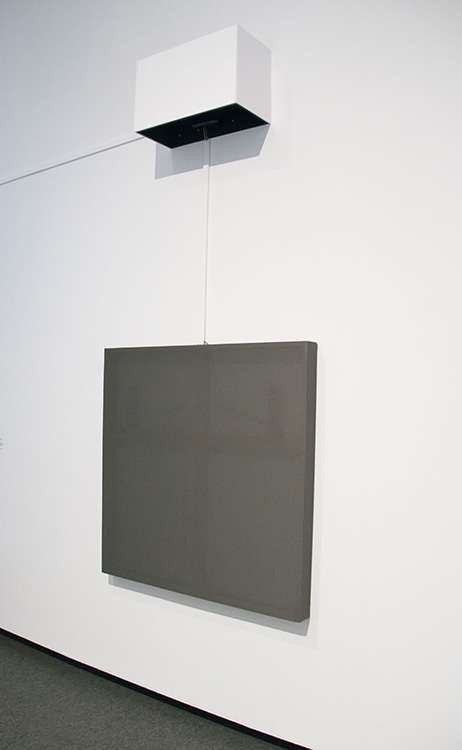
- David Rokeby, Minimal Object (with time on your hands), 2012
- Installation audio interactive / Interactive audio installation 124 x 124 cm Photo : David Rokeby
We have a certain proximity with the works that emerge from the use and/or observation of the technologies that shape our relationship to the world, to others and to ourselves. Recognizing the technologies of our daily lives in an artistic context makes us envisage them differently. Knowing that it is through contact with others that we build ourselves, it is about time to think about the “mechanical” other we increasingly frequent without being too aware of it. Dedicating an exhibition to machines and ideas or the resulting aesthetics amounts to accepting their teachings.
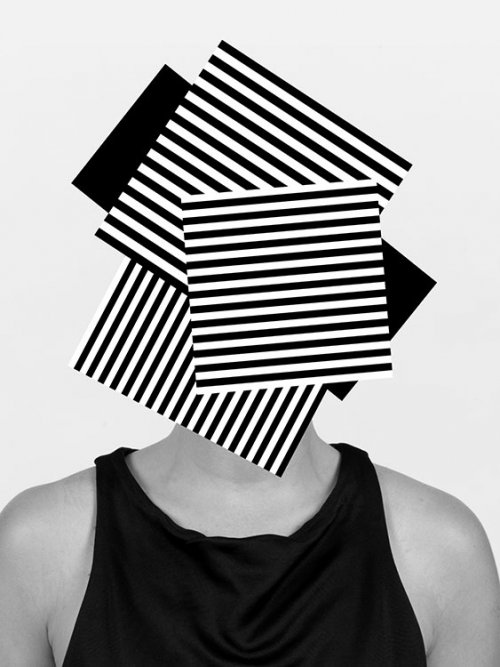
- Douglas Coupland, Deep Face, 2015
- Acrylique sur tirage pigmentaire qualité archive / Acrylic paint on archival pigment print 153 x 122 cm Avec l’aimable autorisation de Daniel Faria Gallery, Toronto / Courtesy Daniel Feria Gallery, Toronto
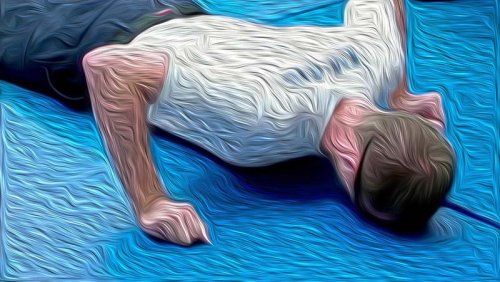
- Émilie Brout & Maxime Marion, Lightning Ride, 2017
- Vidéo / Video 7 min 44 sec en boucle / looped.

- Emilie Gervais, rapperBlOckChain.gif, 2018
- Animation en boucle / Looped animation.
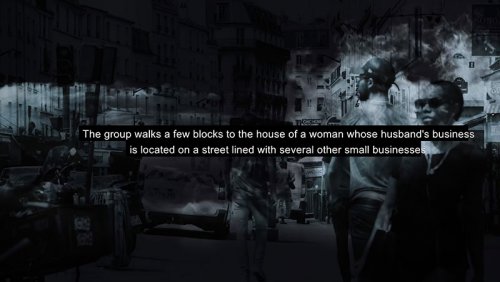
- Grégory Chatonsly, The Dreaming Machine, 2014-2019
- Installation générative / Generative installation XX x YYY x ZZ cm Avec le soutien d’Audi Talents / With the support of Audi Talents.
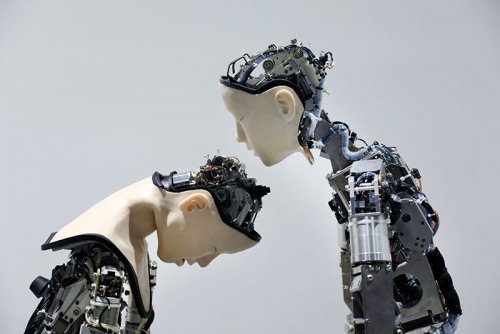
- Justine Émard, Soul Shift, 2018
- Installation vidéo, 6 min, en boucle / Video Installation, 6 min, looped Avec Alter & Alter 2, développés par Ishiguro lab, Université d’Osaka et Ikegami Lab, Université de Tokyo With Alter & Alter 2, developed by Ishiguro lab, University of Osaka and Ikegami Lab, University of Tokyo.

- Louis-Philippe Rondeau, Liminal, 2018
- Installation interactive / Interactive installation — Dimensions de la projection / Projection size 110 x 600 cm

- Matthew Biederman, Interference, 2018
- Installation lumineuse générative / Generative light installation 100 x 100 x 20 cm Travail issu d’une résidence Scale Travels au Laboratoire Ibérique des Nanosystèmes + gnration de Braga au Portugal avec le soutien du Conseil des Arts et des Lettres du Québec et du Conseil des Arts du Canada / This work was created during a Scale Travels residency at the Iberian Nanosystems Laboratory with the assistance of the Nanophotonics Group + gnration in Braga, Portugal with the support of the Conseil des Arts et des Lettres du Québec and the Canada Council for the Arts
Photo : Matthew Biederman
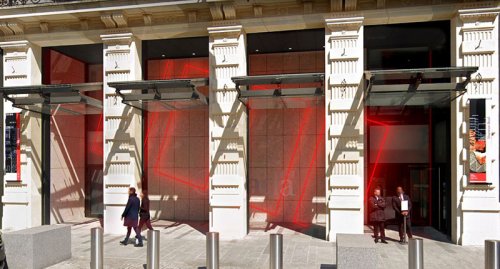
- Olivier Ratsi
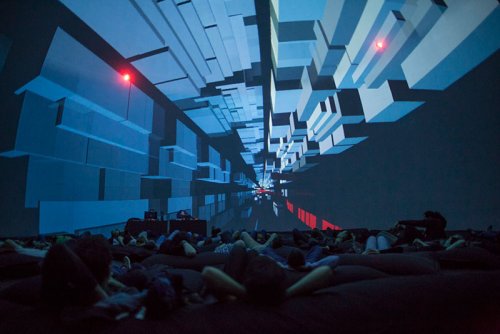
- Pureform
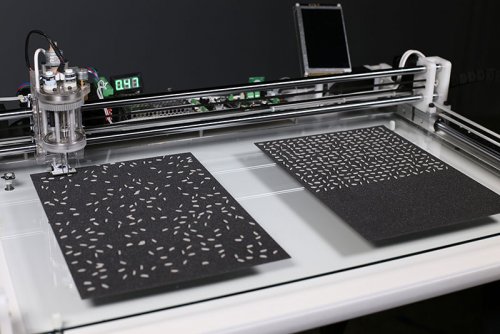
- Samuel St-Aubin, Prosperité, 2017
- Installation robotique / Robotic installation 76 x 94 x 51 cm Photo : Samuel St-Aubin
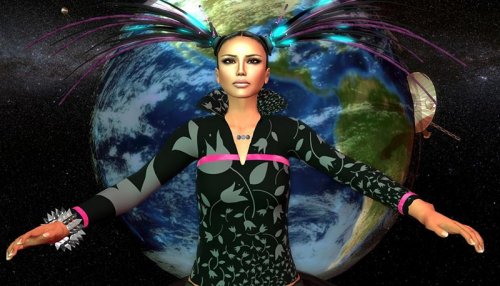
- Skawennati, Satellite of Love, 2018
- Machinimagraphie de Words Before All Else / Machinimagraph of Words Before All Else Impression jet d’encre / Inkjet print 107 x 190 cm, édition / Edition ⅓ Avec l’aimable autorisation de la galerie Ellephant, Montréal / Courtesy Ellephant Gallery, Montreal.
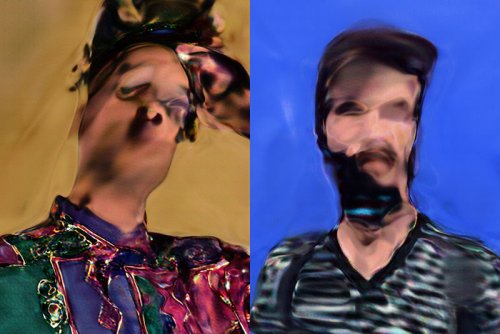
- Mattie Tesfaldet, Xavier Snelgrove, Latent Space Interpolation, 2019
- Installation vidéo / Video installation 27 sec, en boucle / looped.
Works by Matthew Biederman, Emilie Brout & Maxime Marion, Grégory Chatonsky, Douglas Coupland, Chun Hua Catherine Dong, Emilie Gervais, Sabrina Ratté, David Rokeby, Justine Emard, Louis-Philippe Rondeau, Samuel St-Aubin, Skawennati, Xavier Snelgrove & Mattie Tesfaldet, with an exterior installation by Olivier Ratsi.
Guest curators :Dominique Moulon and Alain Thibault Associated curator : Catherine Bédard
Produced by the Canadian Cultural Centre in Paris as part of the official programme of Nemo, the Biennial of Electronic Arts Ile-de-France, in partnership with Elektra (Montreal) and with the support of Région Ile-de-France.
Official opening February 4 from 6 pm At 8 pm, audiovisuel performance ENIGMA by Purform (www.elektramontreal.ca) (Yan Breuleux and Alain Thibault)
Exhibition : February 5 — April 17, 2020 From Monday to Friday, 10:00 — 18:00 - Free Access
Exceptionally open on Saturday April 4, from 10am to 6pm for Paris Art Fair
Centre Culturel Canadien
130 rue du Faubourg Saint-Honoré, 75008 Paris
https://canada-culture.org
Tél :01 44 43 21 90
Cover : Sabrina Ratté, Alpenglow, 2018
Impression jet d’encre & projection / Inkjet print & projection
115 x 150 cm
Avec l’aimable autorisation de la galerie Ellephant, Montréal et de la galerie Charlot, Paris / Courtesy Ellephant Gallery, Montreal and Charlot Gallery, Paris.
